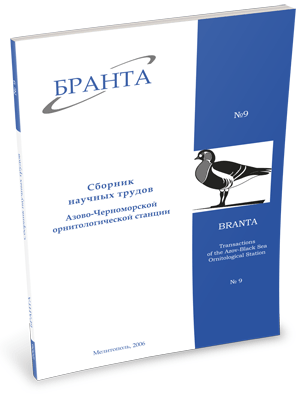
Transactions
of the Azov-Black Sea Ornithological Station



Present state of the Roller (Coracias garrulus) population in transformed landscapes of Kirovograd region
A.O. Shevtsov
The study was taken over the period 1989-2004. Investigations mostly covered the east of the region. Number dynamics of the species were studied in the basin of Ingulets River in Aleksandriyskiy district with the area of 1900 km, where 45 gully forests (a total area of 3400 ha), 240 km of old forest belts and 7 brown-coal mines were examined. To calculate the breeding density topographic maps were used (scale 1:100 000). On them all finds of nests and breeding pairs were indicated.
At all times in Kirovograd region the Roller was a scanty breeding species. By the middle of XX century it mostly bred in old forests. Later the species began breeding in open agricultural landscapes both of natural (gullies, precipices of riverbanks) and anthropogenic (coal mines) origin.
At present main breeding habitats of the Roller in the region are gullies, where 77.1% of all breeding pairs (n=48) were detected. Few numbers of birds breed in steeps of brown-coal mines (20.8%) and in natural precipices of riverbanks (2.1%). Arrival of breeding pairs in Aleksandriyskiy district is in late April-early May. On average for 8 years the arrival was recorded 3 May±4.8 days, while departure was in late August or early September. Mean breeding density in the district was 1 pair/58.4 km2. Many years’ counts of breeding pairs of the species show small fluctuation in the bird numbers. At present the numbers are low, but stable.
According to the data of personal observations, inquires and analysis of literary sources the overall numbers of the Roller in the investigated area are estimated as 100-120 breeding pairs.
Read the paper in a PDF file